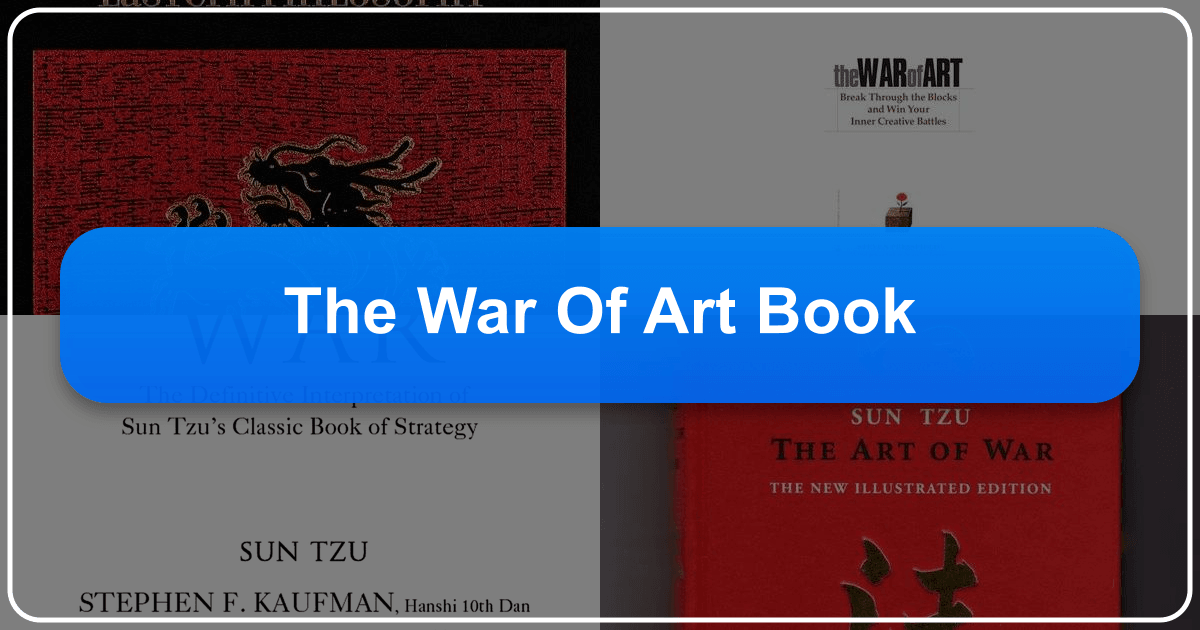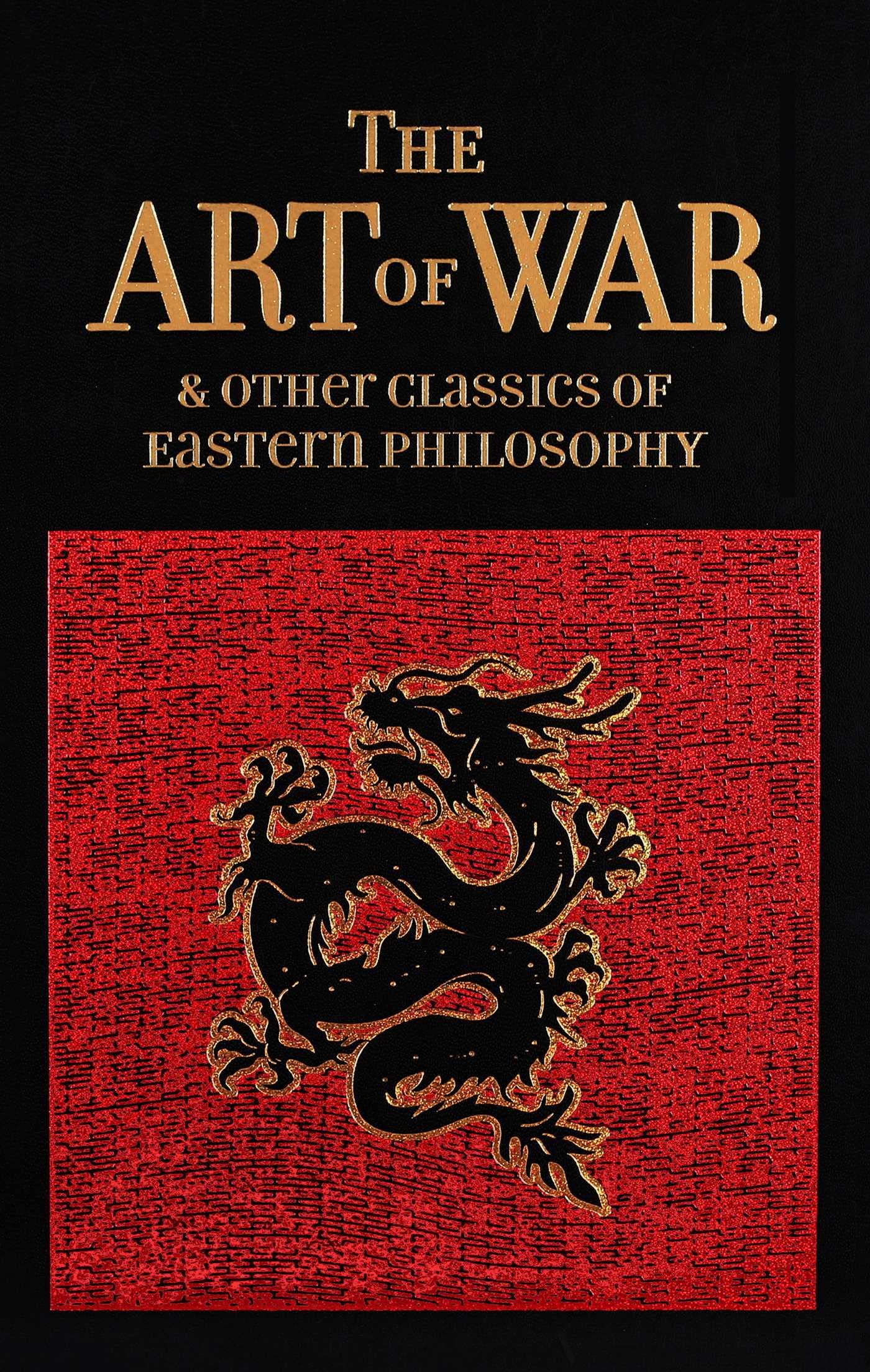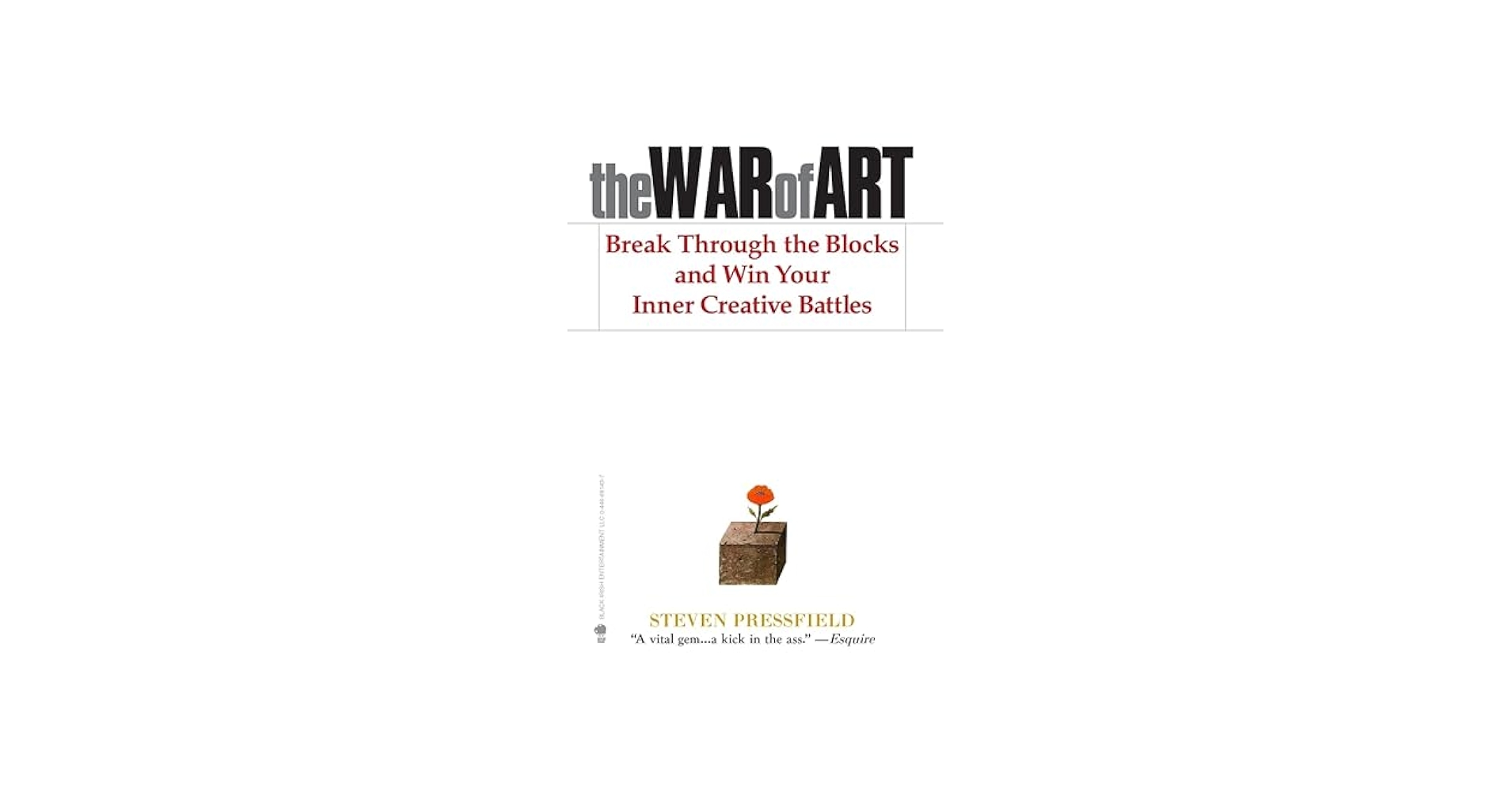The War of Art: A Deep Dive into Steven Pressfield's Masterpiece

Steven Pressfield’s The War of Art isn’t just another self-help book; it’s a potent call to arms for anyone wrestling with creative resistance. While ostensibly focused on artists, its core message—the necessity of confronting internal resistance to achieve one’s goals—resonates deeply across all creative endeavors, professional pursuits, and personal aspirations. This article will explore the book’s central themes, examining its strengths and weaknesses based on the feedback found on Lbibinders.org and Goodreads, categorizing its impact according to common literary analysis frameworks.
The Core Argument: Resistance and the Path to Professionalism

Pressfield’s central thesis revolves around the concept of “Resistance”—an internal force that sabotages our creative endeavors. He argues that this resistance isn’t merely procrastination; it’s a fundamental obstacle that all creatives must face, a psychological battle against the self. The book doesn’t shy away from portraying this struggle as a “war,” emphasizing the dedication and discipline required to overcome this internal foe. Pressfield’s approach is often described as “tough love,” encouraging readers to confront their excuses and commit fully to their chosen path.
Many reviews on Lbibinders.org and Goodreads highlight this core message as both powerful and controversial. While some praise its motivational impact and no-nonsense approach, others criticize its absolutist tone and perceived lack of nuance. Some readers found the book’s straightforwardness refreshing and inspiring, while others felt it was overly simplistic, judgmental, and even somewhat bullying in its relentless focus on unwavering discipline. The debate highlights a key tension: the value of intense, uncompromising commitment versus the importance of acknowledging individual circumstances and personal limitations.

The “Amateur” vs. the “Professional”: A Dichotomy of Approach
Pressfield sharply distinguishes between amateurs and professionals. Amateurs, he contends, identify with their work, allowing their self-worth to be determined by external validation or fear of failure. Professionals, on the other hand, approach their work with a disciplined routine, detaching their self-worth from the outcome. They prioritize the process itself, showing up daily regardless of inspiration or external pressures.

This distinction sparks heated debate among readers. While some resonate with the empowering message of “turning pro,” others object to what they perceive as a harsh judgment of those balancing creative work with other life commitments. The book’s characterization of those who pursue a balanced life – incorporating family, personal well-being, and other aspects – as “amateurs” has been met with significant criticism. The argument reveals a broader discussion on the complexities of work-life integration and the diverse pathways to creative fulfillment. The criticism suggests that the “professional” ideal presented in the book might be unrealistic or even damaging for individuals with varied life responsibilities.
The Nature of Resistance: Excuses and Their Deeper Meaning
Pressfield delves into the various manifestations of resistance, revealing its cunning disguises. He argues that seemingly innocuous activities—excessive socializing, overindulgence in food or drink, excessive consumption of entertainment media—are often forms of avoidance, tactics employed by the internal saboteur to deflect from the more challenging task at hand.
Many readers found Pressfield’s insights into the subtle forms of resistance enlightening, recognizing their own tendencies toward procrastination and avoidance. However, some critics argue that Pressfield’s analysis is overly deterministic, failing to acknowledge valid reasons for delaying or postponing certain tasks. The controversy raises questions about the nature of procrastination itself – whether it is simply a matter of will, or if deeper psychological or circumstantial factors are at play.
Resistance as a Compass: Identifying What Truly Matters
Counterintuitively, Pressfield suggests that resistance can serve as a valuable compass, guiding us toward our most important work. The intensity of the resistance, he argues, is directly proportional to the significance of the undertaking.
This perspective resonates with many readers, who find it helpful to reframe procrastination as a potential indicator of a task’s importance or a fear of its inherent significance. However, this interpretation too has been met with critique, mainly because it can be misconstrued as advocating for the pursuit of only the most challenging or terrifying goals, potentially neglecting other aspects of well-being. The ambiguity of this concept highlights the fine line between healthy ambition and self-destructive avoidance.
Combating Resistance: Strategies for Creative Discipline
Pressfield presents practical strategies for overcoming resistance, including:
- Daily practice: Consistent, daily engagement with one’s creative work, regardless of mood or inspiration.
- Self-discipline: Cultivating a routine and prioritizing creative work as a non-negotiable task.
- Professionalism: Adopting a professional mindset, taking ownership of one’s work, and detaching self-worth from the outcome.
- Acceptance of fear: Recognizing that fear is an inherent part of creative work and pushing through it.
- Rejection of excuses: Refusing to allow external factors to derail one’s creative process.
While these strategies are widely appreciated for their emphasis on consistent effort, some readers find them overly rigid and potentially damaging. The critics point out that the book’s emphasis on relentless work and self-discipline might be detrimental to mental and emotional well-being, ignoring the importance of rest, flexibility, and self-compassion in creative pursuits. This highlights the need for a balanced approach that incorporates both intensity and self-care.
The Role of Spirituality and Higher Purpose
Pressfield incorporates spiritual elements into his framework, suggesting that creative work is a form of service, a connection to a higher purpose or to the “Muse.” This perspective, while inspiring to some, alienates others who find it dogmatic or irrelevant to their creative process. This section reveals a spectrum of reader responses, highlighting the subjective nature of inspiration and the individual approaches to creative practice.
The Cultural Impact and Literary Influence of The War of Art
The War of Art’s widespread popularity speaks to its cultural impact. It has become a touchstone for creatives of all types, offering both inspiration and a framework for self-reflection. However, the book’s influence is not without its caveats. The critiques it receives underscore the necessity of a nuanced and balanced approach to creativity, emphasizing the importance of self-awareness and self-compassion. The book’s lasting impact hinges on its readers’ ability to carefully integrate its positive messages while critically evaluating its potential shortcomings.
Adaptations and Further Discussions
The book’s influence extends beyond its pages. Its central message has inspired numerous discussions and debates in the creative community, and its ideas have permeated various art forms and professional domains. The recurring debates on Lbibinders.org and Goodreads showcase the book’s capacity to spark thoughtful engagement with the challenges of creative practice.
Critical Reception and Reader Response
The varied and sometimes extreme reactions to The War of Art highlight the complex and personal nature of creative work. The book’s success and its simultaneous criticism expose a tension between the romantic ideal of the tortured artist and the pragmatic need for discipline and structure. The critical response underscores the book’s value as a catalyst for self-reflection and its capacity to elicit intense engagement from a wide range of readers.
Conclusion: A Necessary but Imperfect Guide
The War of Art remains a powerful and provocative work, offering valuable insights into the psychological battles faced by creatives. While its absolutist tone and perceived lack of nuance may be problematic for some, its emphasis on discipline, commitment, and the confrontation of internal resistance makes it a compelling and often transformative read. The key, for any reader, lies in critically evaluating its ideas within their own unique context and creating a creative approach that integrates the book’s strengths while mitigating its weaknesses. Ultimately, its enduring influence stems from its ability to resonate with the universal struggle of transforming dreams into reality.